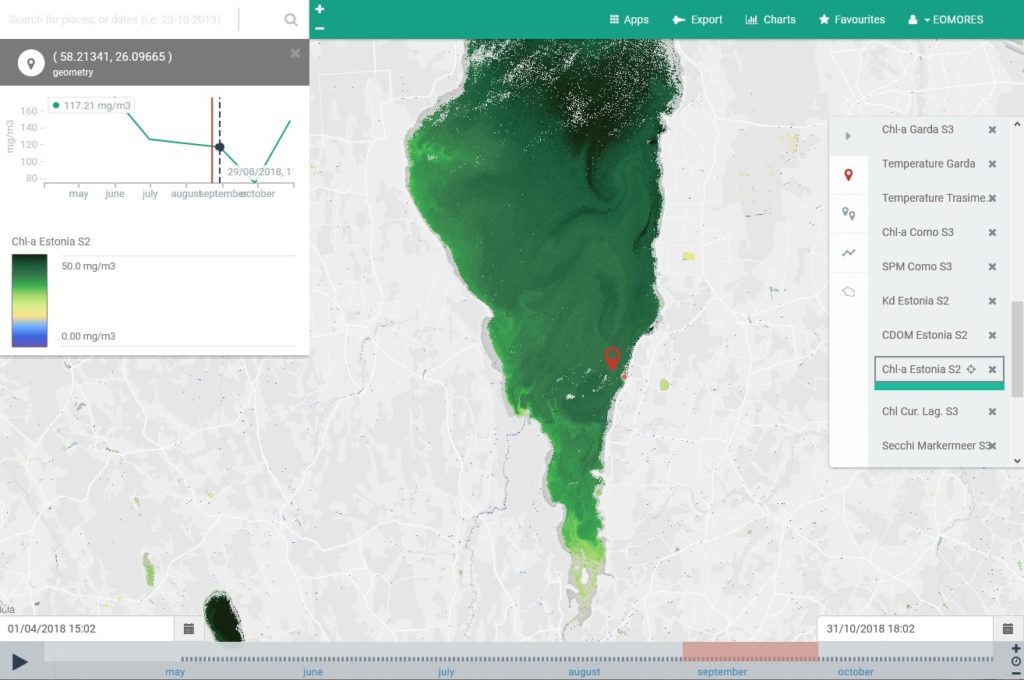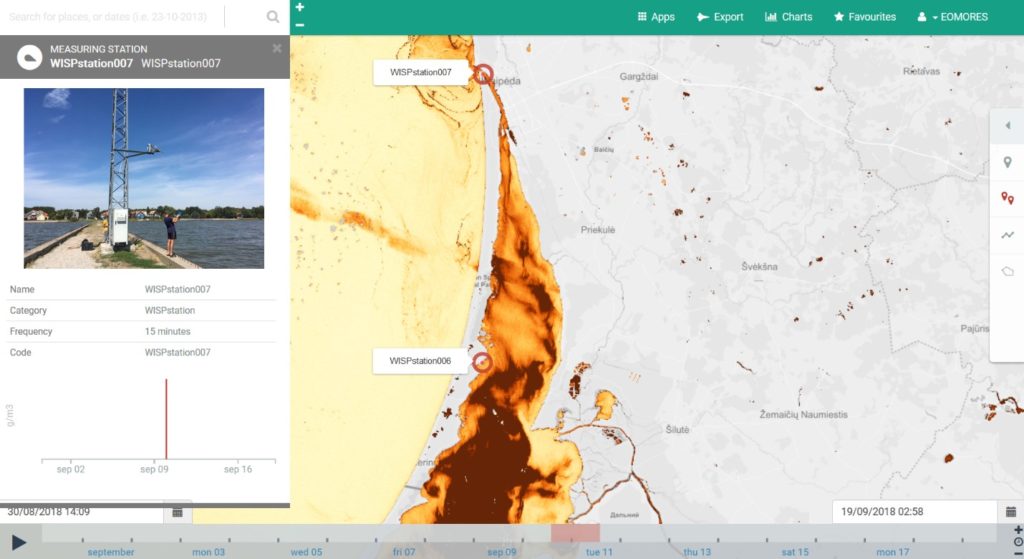The EOMORES project has developed a series of services for monitoring the quality of inland and coastal water bodies, using both in situ and EO data. On the verge of launching its commercial activities, EOMORES is proud to announce the launch of the EOMORES Portal.

Algal blooms (chlorophyll-a concentration) in lake Võrtsjärv, Estonia. Information about such blooms is important for bathing water quality, as proxy for eutrophication and for the ecological status of a lake.
EOMORES[1] is using data from EO satellites in addition to in situ sensors to measure, model and forecast water quality parameters. By using EO data, EOMORES services overcome traditional issues that in situ-only water sampling may encounter, as having to take samples physically for analysis in a laboratory can be both costly and time-consuming. Particularly problematic in this sense may be remote or difficult to reach locations.
In said context, the free and open data from the Copernicus Sentinels
satellites, known for the long-term availability, as well as for its spatial
and temporary resolution, prove as an optimal mean for complementing in situ
measurements for more complete and less costly services destined, inter alia,
for reporting under the Water Framework Directive: an obligation pending on
each EU member state.
But EOMORES services are not only for local authorities and policymakers. The newly launched EOMORES Portal allows any interested stakeholder in the field of inland and coastal water quality measurement to become a user of the EOMORES portal and browse between several data layers, (e.g. choosing to only concentrate on high-frequency in situ measurements taken by a WISPstation) or explore time series and even export downloaded data into the user’s own GIS software.

The Lithuanian Curonian Lagoon, with high turbidity in areas with massive cyanobacteria blooms. The two WISPstations provide high-frequent in situ measurements of the water quality.
You can visit the portal at http://eomores.lizard.net to see an example map. If you wish to see
more, please contact us at info(at)waterinsight.nl
[1] This project has received funding from the European Union’s Horizon 2020 research and innovation programme under grant agreement n° 730066.
